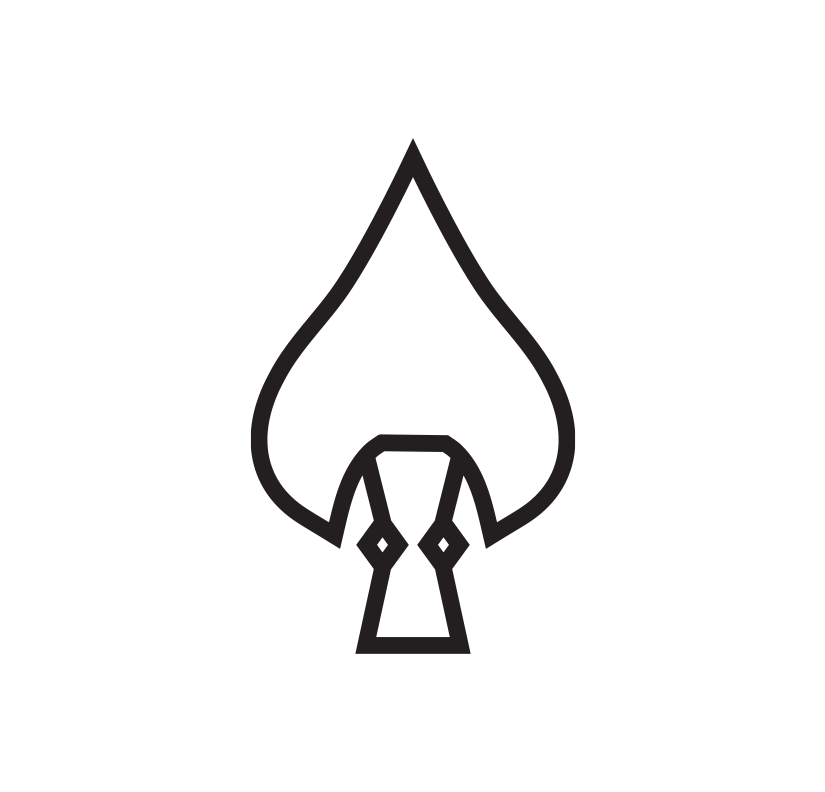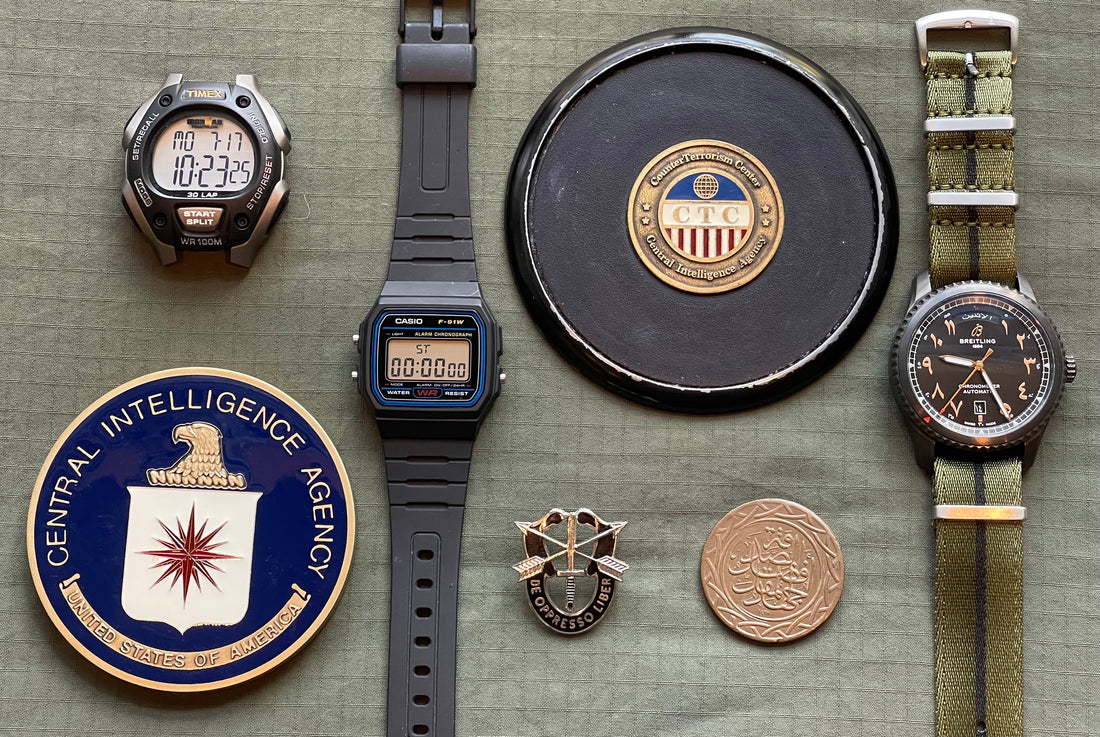by J.R. Seeger
For this week’s Dispatch, former senior CIA Case Officer J.R. Seeger writes about the role his watches played in the early days of the conflict in Afghanistan. As Seeger outlines, watches are tools, and one should choose the best tool for the job. In the world of espionage, the tool is not always a Rolex.
We often worry that W.O.E. gives the perception that every Case Officer, Navy SEAL or Special Forces operator is running around the world with a luxury timepiece on their wrist. While that is largely the focus of this platform, the truth is many of the best practitioners rely on digital tools to accomplish their task. Sometimes cheap, reliable digital watches are the best tools for espionage.
Digital Watches of Espionage - The Role Watches Played in the Early Days of the CIA’s War in Afghanistan
October 2001:
I was the team leader on one of the first CIA teams into Afghanistan. Other, more articulate writers have related the story of our team and work with US Special Forces. 12 Strong by Doug Stanton and First Casualty by Toby Harnden are detailed accounts of the Fall of 2001. Instead, this is a short essay about the watches I wore during that deployment behind the Taliban lines in the Fall of 2001.
For most of my deployments in the 1990s, I wore either a Timex Ironman or a Casio G-shock. My watch choice was based on two requirements: accurate timekeeping and low cost. During travels in the Middle East, South Asia, and Central Asia, the idea of wearing something other than an expendable watch was out of the question. Plus, my only “good” watch, a 1971 Bulova Deep Sea Chronograph, was engraved with my initials, not always something you want on your wrist when you might be someone else.

CIA’s Team Alpha Prior to Insertion into Afghanistan. Seeger Back Row, Third From Left
As the team headed to our intermediate stop in Uzbekistan, our level of kit was minimal. I often say our team picture (above) looks like eight bikers with Kalashnikovs. Jeans, work shirts, boots and fleece jackets, weapons, radios and money. Everything you would need for a successful trip into a war-zone.
During my pack-out, I didn’t pay any attention to the watch on my wrist. Of course, I should have realized that I was probably pushing the envelope on the battery in my Timex, but I had a couple of other things to worry about as we designed a campaign plan for five provinces in Afghanistan.
As we completed our final briefings in isolation at Karshi Khanabad Airbase (aka KKUZ), I realized my watch had quit. No warning. Just a blank screen. Less than ideal when precision is required.
Casio F-91W, w/ AKS-74U (Photo Credit James Rupley)
One of my teammates laughed and said, “Boss, you forgot that two is one and one is none.” He reached into his ruck and pulled out a Casio F-91W. Probably the least expensive piece of kit in all our inventory. He tossed it to me, and it went on my wrist. A cheap watch is better than no watch at all! We loaded into MH-60 helicopters in the early morning of 16 October for our insertion. That’s a story that has nothing to do with watches.
Lessons:
- two is one and one is none
- you may never know when a piece of kit is going to be essential
Tool Watches as Operational Gifts to Afghan Warlords
In November 2001, we were in a consolidation phase of the effort to defeat the Taliban. By this time, we had consolidated the two teams, Alpha and Bravo and had a full complement of eleven to handle the region. We often split into buddy teams to travel with our Afghan and Army Special Forces colleagues, hunting Taliban and building tribal alliances. Early in November, in one of our parachute resupplies, I received a Suunto watch - an early version of the Suunto tool watch series. Someone on the team decided I needed a better watch and put in the request.
The early Suunto watches were large plastic timepieces that served as a compass, thermometer, and barometer as well as the standard multiple time zones display, timers and alarms. It was a bit more of a commando watch than I thought I needed, but I was certainly ready to use it. It was big and regularly got caught on rucksack straps as we loaded on horseback and/or trucks. Still, it was light and had a large display. At 47 with already aging eyesight, I was ready to enjoy a larger screen.
 “Suunto on my wrist in the Darya Suf Valley”, J.R. Seeger pictured left, (Photo Credit: Toby Harnden/Unknown)
“Suunto on my wrist in the Darya Suf Valley”, J.R. Seeger pictured left, (Photo Credit: Toby Harnden/Unknown)
In mid-November, two of us went with Afghan warlord and then CIA partner - Abdul Rashid Dostum on a tour of the Uzbek region of Northwestern Afghanistan. More than anything else, it was a “victory lap” for our Uzbek ally and that meant traveling miles on dirt roads between Sheberghan and cities and towns in northwest Afghanistan.
A Toyota Land Cruiser for us, two Toyota Hi-Lux pickups for the security detachment. Washboard roads punctuated by public events made for a very long ride. At the end of the day, Dostam decided to take a shortcut by traveling on what he said was an old smugglers’ trail running through the desert and ending back in Sheberghan. We were all tired and dozed off as the headlights of the Toyotas cut through the dust raised by our vehicles.
I don’t know exactly what woke me from my dozing, but when I finally cleared my head, it seemed like I recognized the terrain. Of course, desert terrain is not all that distinctive, so I would have been willing to accept the fact that it was a trick of memory and fatigue. Still, I used the Suunto compass feature to check our heading. After twenty minutes, I realized we were slowly circling a prominent hill. The drivers were following a track that circled the hill. The compass showed our heading. Sheberghan was east. We were going north, then west then south…. Well, that was enough to convince me we were lost.

Seeger Center, Dostum looking at him, Casio F-91W (Photo Credit Unknown / Toby Harnden)
I woke up Dostum. He was incredulous. There was no way we could be lost on his turf. I took off the watch, showed him the compass readings. He was furious. This was smugglers’ country. Wandering about might not get us in a battle with remnants of the Taliban, but it certainly could get us in a firefight with smugglers. Dostum put the watch on his wrist, dope slapped his driver, and took charge of the navigation.
Dostum wore the Suunto for the rest of our time in Afghanistan. I wore the F-91W for another two years and then switched to a G-shock. At the end of the day, a good tool watch is important. What you need depends on where you are. Today, I have far more watches than I need. Most of which are inexpensive mechanical tool watches and I enjoy wearing them. I recently had the 1971 Bulova serviced, and it will remain a cherished possession. But, I still have an F-91W in the inventory – just in case.
 Seeger and Dostum on the night of insertion, 16 October 2001, Casio F-91W on J.R. Seeger’s wrist. (Photo Credit: Unknown Toby Harnden)
Seeger and Dostum on the night of insertion, 16 October 2001, Casio F-91W on J.R. Seeger’s wrist. (Photo Credit: Unknown Toby Harnden)
J.R. Seeger served as a paratrooper in the 82nd Airborne and as a CIA officer for a total of 27 years of federal service. He served 17 years in multiple field assignments focused on counterterrorism, counterintelligence and irregular warfare. During his final, 3-year assignment in CIA Headquarters, he first served as a chief of operations for a geographic division in the Directorate of Operations and then served as a deputy director and deputy chief of the CIA Counterterrorism Center. Seeger led multiple, small unit teams during his service, including leading one of the CIA teams that infiltrated into Afghanistan after 9/11.
Since his retirement, J.R. has written articles and book reviews in the CIA professional journal “Studies in Intelligence” and the T.E. Lawrence Society newsletter. His seven-part MIKE4 series is about a family who have served in the special operations and intelligence community from World War II to the present.
This newsletter has been reviewed by the CIA’s Prepublication Classification Review Board to prevent the disclosure of classified information.
Further Reading:
CIA’s JAWBREAKER Team And A Rolex Submariner









1 comment
This story is why the motto : “Use your tools” encompasses so much, with so little. It can be extrapolated to the office, the jiujitsu mat. My watch is like my totem: a quick look into my wrist and I know I can face any challenge, I know it sounds silly, but…I think it reflects much of how you see the world, it is a very personal item and a statement.
My brother in law gave me some years ago his old F-105 ( blue backlight) and it has never, ever failed me. The thing is, people around me usually makes fun of me for having those backups, until their phone battery dies and they are late to work.
As always, thank you for sharing, Dispatch. Big fan.